 Query and Search indices management in the Rational solution for Collaborative Lifecycle Management. Part 1: Query, Search and indexing technologies in CLM.
Query and Search indices management in the Rational solution for Collaborative Lifecycle Management. Part 1: Query, Search and indexing technologies in CLM.
Authors: JorgeAlbertoDiazBuild basis: Rational solution for Collaborative Lifecycle Management - Rational Team Concert, Rational Quality Manager, Rational Requirements Composer, Rational Design Manager 4.0.1 and 5.0.
Content and information valid for: CLM 4.0.x and CLM 5.0.x products
The purpose of this series of articles is to provide a basic understanding of the indexing processes in Jazz used by information query and search features, the technologies involved and to provide guidance on the associated administering tasks. We will also briefly review some details on the base architectural details, and how information is stored and queried in the different CLM applications.
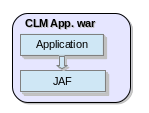 A subset of the services provided by the Jazz Team Server (a subset of JAF), are known as Jazz Foundation Services (JFS). For our discussion, it is important to note that part of the JFS services are: Storage APIs, Query APIs and Indexing APIs. JFS are used as a framework by Requirements Management, Design Manager and Lifecycle Project Administration (LPA) applications, and for the dashboards implementation.
Starting as of CLM version 4.0, Jazz applications are built using the JAF frameworks as described, however given the evolution of the products and their implementation technologies, we have to also take into account the following building technologies and SDKs in use:
A subset of the services provided by the Jazz Team Server (a subset of JAF), are known as Jazz Foundation Services (JFS). For our discussion, it is important to note that part of the JFS services are: Storage APIs, Query APIs and Indexing APIs. JFS are used as a framework by Requirements Management, Design Manager and Lifecycle Project Administration (LPA) applications, and for the dashboards implementation.
Starting as of CLM version 4.0, Jazz applications are built using the JAF frameworks as described, however given the evolution of the products and their implementation technologies, we have to also take into account the following building technologies and SDKs in use:
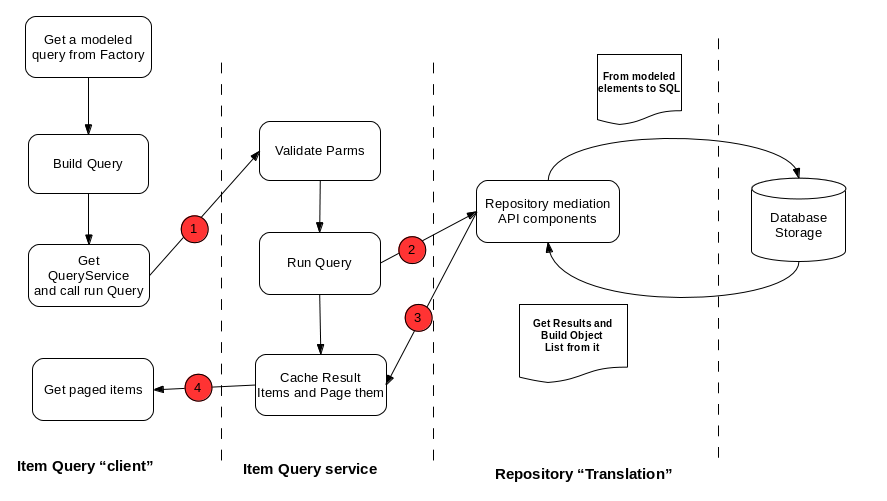 Where:
Where:
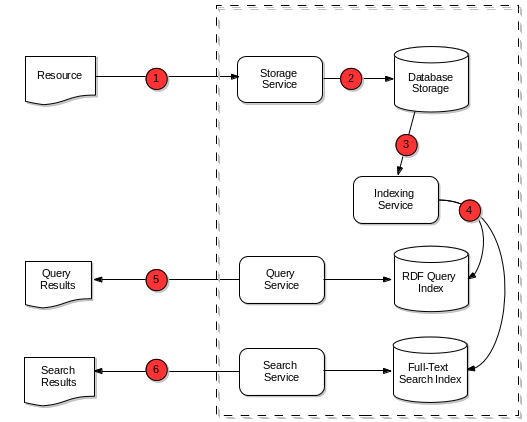 The Indexing Service (steps 3 and 4 in previous diagram), is responsible of building the different indices as an asynchronous process. The service stores information on the indexes of last updated state and polls repository periodically for changes to be indexed.
From previous diagram you can also identify the importance of the indexing mechanism from final client perspective and how it will interact (steps 5 and 6 in the previous diagram), to retrieve the desired content and artifacts.
These indexing contents are realized in your environment within folders like the following:
The Indexing Service (steps 3 and 4 in previous diagram), is responsible of building the different indices as an asynchronous process. The service stores information on the indexes of last updated state and polls repository periodically for changes to be indexed.
From previous diagram you can also identify the importance of the indexing mechanism from final client perspective and how it will interact (steps 5 and 6 in the previous diagram), to retrieve the desired content and artifacts.
These indexing contents are realized in your environment within folders like the following:
 We will review in the next part of this article series how indexing storage can be configured along with some administration tips.
We will review in the next part of this article series how indexing storage can be configured along with some administration tips.
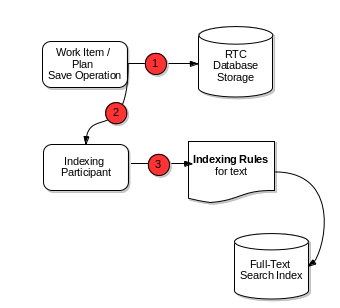 This indexing behavior has an exception: when CLM is deployed in a clustered configuration, the RTC text indexer performs asynchronously to be able to participate in the nodes information sharing and keep consistency.
This indexing behavior has an exception: when CLM is deployed in a clustered configuration, the RTC text indexer performs asynchronously to be able to participate in the nodes information sharing and keep consistency.
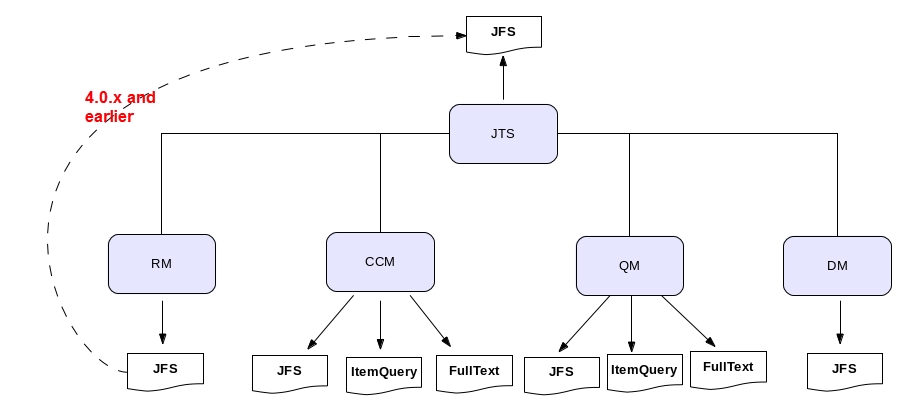 From the previous diagram note that:
From the previous diagram note that:
Querying and Indexing in your CLM deployment
This first part focuses on providing a general context to the discussion, introducing some of the terminology and supporting technologies that leverage artifacts query and text search capabilities for the Rational Collaborative Lifecycle Management solution. We will briefly discuss how the different Jazz CLM applications index and query information, and how all this is realized in your CLM deployment. You can take a typcial Departmental Topology as reference CLM deployment for the remainder of the article. For the discussion that will follow it is recommended to check this Knowledge Center topic or the blog article called Building products from applications.A quick review of the architecture
Before discussing how query and search is implemented in CLM we will introduce some details around the CLM products architecture. Different implementations of the query and search services exist based on how the base architecture solves it and what frameworks are used; so we are going to briefly review the building blocks that make up the applications to provide some context on the features implementation details to come. Don't get puzzled by the details, the relationship between these architectural pieces and the query and search capabilities implementation in CLM will become clearer as you read through the article. The Jazz Team Server application provides the services for the integration of applications both of the CLM solution, other IBM offerings and third-party applications; leveraging the collaboration of all these tools and the seamless integration between them to work as a single logical server. It provides common user administration, authentication services, licensing management, dashboards and data warehousing for the applications that are associated with it. The Jazz Team Server is also found in the form of a library integrated in the CLM applications, in this case it is known as Jazz Application Frameworks (JAF). The JAF SDK provides the underlying architectural pieces for building applications and is embedded in the CLM applications that are built using this architecture: the Change and Configuration Management (CCM), Quality Manager (QM) and Design Manager (DM) applications embed JAF inside them. NOTE: the Requirements Management (RM) application uses JAF starting in 5.0. A subset of the services provided by the Jazz Team Server (a subset of JAF), are known as Jazz Foundation Services (JFS). For our discussion, it is important to note that part of the JFS services are: Storage APIs, Query APIs and Indexing APIs. JFS are used as a framework by Requirements Management, Design Manager and Lifecycle Project Administration (LPA) applications, and for the dashboards implementation.
Starting as of CLM version 4.0, Jazz applications are built using the JAF frameworks as described, however given the evolution of the products and their implementation technologies, we have to also take into account the following building technologies and SDKs in use:
A subset of the services provided by the Jazz Team Server (a subset of JAF), are known as Jazz Foundation Services (JFS). For our discussion, it is important to note that part of the JFS services are: Storage APIs, Query APIs and Indexing APIs. JFS are used as a framework by Requirements Management, Design Manager and Lifecycle Project Administration (LPA) applications, and for the dashboards implementation.
Starting as of CLM version 4.0, Jazz applications are built using the JAF frameworks as described, however given the evolution of the products and their implementation technologies, we have to also take into account the following building technologies and SDKs in use:
- Rational Team Concert (RTC) and Rational Quality Manager (RQM) are based on the Jazz 0.6 SDK (also known as Repository). This framework provides storage and query services. We will discuss them in the following topic. One of the defining characteristics of applications based on this architecture is that they have their own repository (e.g. database).
- Requirements Management (RM) in CLM 4.0.x versions is implemented as what is called a JTS "fronting application" which means that it relies on the Jazz Team Server to which is associated for services such as storage, query and search. This is important to keep in mind for indices storage considerations as we will review later. Starting in CLM version 5.0, RM uses JAF and has its own storage.
- Rational Design Management (DM) is built using JAF framework as previously described. It has its own repository and uses JFS for querying and indexing.
Query and Search capabilities implementation
The different frameworks that we have reviewed provide different solutions for the query and search capabilities. This can be categorized in three groups:- Item Query Service: this service implementation provides an abstraction layer on top of SQL to store and query structured data, based on the underlying database technology. It belongs to the Jazz 0.6 SDK and it is therefore used by RTC and RQM.
- JFS query and search services: the applications that make use of JFS framework take advantage of these services. The underlying technologies used in the services implementation are:
- Query Service. The information about stored artifacts is indexed in form of RDF metadata (RDF/XML, N-Triples or Turtle format), based on Jena.
- Text search Service. Text information indexing and search is based on Lucene technology
- FullText search service: this is a custom implemented text search service based on Lucene technology. This custom service is used by RTC and RQM. This service implementation in RTC is open to any component but currently being used by work items and plans.
Item Query Services
These services allow the creation and execution of Item queries providing an abstraction of the low level details for querying the repository for Items; where an Item is the representation of an object stored in the repository, with proper ways of accessing its information and states. Working with repository items in the context of item queries are based on the following main building blocks:- Queries are modeled assuring access to queryable element and attributes in the component model is type-safe.
- The different queryable elements provides type safe methods for performing valid query operations.
- Using the previous elements, the Item Query API allows for building the query, its predicates and running it with isolation of storage details.
- The result of queries are cached in the server and paged. Paged items are retrieved to the client in a next-page-request basis.
 Where:
Where:
- Once the item query is built, it is passed to the query service for running it
- The service perform some initial validation of query parameters and calls the supporting repository API. This will transform it into actual SQL to run the query.
- The results are passed back to the service as a list of objects (the Items), which are paged and cached
- The client requests the result pages
JFS: storage, query and search services
The following diagram describes the high-level interaction of elements from information storage and contents indexing, to information look up as they are implemented by the JFS services: The Indexing Service (steps 3 and 4 in previous diagram), is responsible of building the different indices as an asynchronous process. The service stores information on the indexes of last updated state and polls repository periodically for changes to be indexed.
From previous diagram you can also identify the importance of the indexing mechanism from final client perspective and how it will interact (steps 5 and 6 in the previous diagram), to retrieve the desired content and artifacts.
These indexing contents are realized in your environment within folders like the following:
The Indexing Service (steps 3 and 4 in previous diagram), is responsible of building the different indices as an asynchronous process. The service stores information on the indexes of last updated state and polls repository periodically for changes to be indexed.
From previous diagram you can also identify the importance of the indexing mechanism from final client perspective and how it will interact (steps 5 and 6 in the previous diagram), to retrieve the desired content and artifacts.
These indexing contents are realized in your environment within folders like the following:
 We will review in the next part of this article series how indexing storage can be configured along with some administration tips.
We will review in the next part of this article series how indexing storage can be configured along with some administration tips.
FullText search service
We have already seen that this custom service is implemented in RTC and RQM. But how content is indexed in this feature?- Rational Team Concert: this index in RTC is built in a synchronous way: as part of a save operation the index is updated with the plan, work item content or attachments information.
 This indexing behavior has an exception: when CLM is deployed in a clustered configuration, the RTC text indexer performs asynchronously to be able to participate in the nodes information sharing and keep consistency.
This indexing behavior has an exception: when CLM is deployed in a clustered configuration, the RTC text indexer performs asynchronously to be able to participate in the nodes information sharing and keep consistency.
- Rational Quality Manager: the indexing in RQM is built the following way:
- Index is updated at every edit
- Every ~300 saves a reindex is kicked off
Recap: Search and indexing in your CLM deployment
From a deployment perspective, taking the Departmental Topology as reference including the DM application; the following diagram summarizes which of the discussed technologies would exist in each CLM application (the diagram removes the databases for simplicity): From the previous diagram note that:
From the previous diagram note that:
- LPA and Dashboards, although omitted in this diagram, are applications on top of JTS.
- Dashboards for ALL the applications are hosted and stored in the JTS (including CCM and QM ones).
- Theming: CCM, QM and JTS has its own theming handler which uses JFS for indexing and querying themes. Fronting applications use the theming information from JTS.
- JFS in CCM application: when RTCEE features are used, JFS is used for the RTCEE related information storage, indexing and searching.
- RM, in 4.0.x and earlier, uses JTS for the storage, querying, searching and indexing services. So RM uses JFS technology but in the context of JTS. In 5.0.x, RM uses JAF.
Related topics:
External links:
- RSC 2009: SDP22 - The IBM Jazz Foundation and the IBM Jazz Integration Architecture
- Indexing and Query
- Jazz Foundation Indexing RDF for Query
- Lucene Tutorial: Lucene Text File Indexer
- CLM Build Architecture - Overview
- Introduction to Jazz Application Frameworks SDK
- The Jazz Application Frameworks
- Jazz Foundation Specifications
Additional contributors: MartinAeschlimann, PhilippeMulet, JohnWhitfield, SimonHelson, JeromeLanneluc, TimFeeney
Contributions are governed by our Terms of Use. Please read the following disclaimer.
Dashboards and work items are no longer publicly available, so some links may be invalid. We now provide similar information through other means. Learn more here.